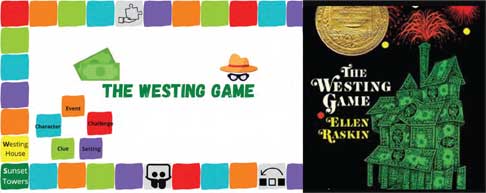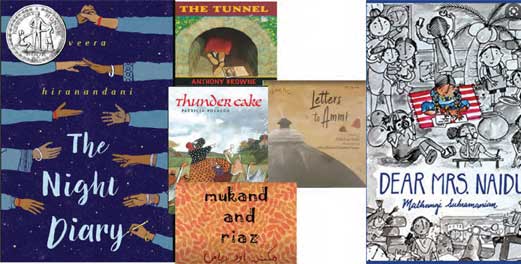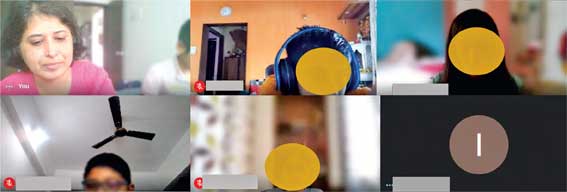Sonia Deshpande
How can reading together as a group deepen children’s engagement with books? How do discussions around books bring children together as a reading community? Can these communities form in an online space? These were questions that I explored in a field project done as part of the Library Educators Course (LEC) offered by Bookworm, Goa.
The LEC course changed how I approached reading and children’s books. Prior to the LEC, my approach to reading was limited to it being a simple pleasure. But LEC expanded my understanding of reading and I realized that interactions in the library can encourage children to enjoy reading and think critically.
An experience during the LEC that resonated deeply with me was that of participating in reading circles. I was intrigued by the way my own understanding of the text was scaffolded through these discussions. This led me to explore if something similar can be done with children around a selected text.
A literature circle is defined by Schlick Noe and Johnson as,“A group of readers who gather to discuss a book,” (Noronha, 2016). In the past year I facilitated two literature circles, the first was as a field project for the LEC and another six months later.
First literature circle
For my first literature circle, I chose The Westing Game by Ellen Raskin, a 1978 Newbery winner, to explore elements of the mystery genre. I planned for the literature circle to run for 8 weeks through online sessions. There were eight children, in the age group of 11-12 years. The sessions began with an activity or reading a section of the book together and was followed by a discussion.

The activities that worked well with the children were participatory, read-aloud as well as a readers’ theater where each child was assigned a character. The children also enjoyed creating a board game based on the book.
Apart from the activities, the group enjoyed discussing various themes and ideas in the book. One engaging session was spent examining the possible suspects in the book. This discussion revealed that each one’s notion of suspicious behaviour differed and we reflected on why they think a character is suspicious. The value of reading together emerged as children exchanged opinions enriching their own understanding.
Reflections on the first literature circle
Reflecting on the experience of the first literature circle, there are several things that I would have done differently.
The space for children’s voices in selection and activities: I didn’t know the group of children well prior to holding the literature circle. Had I known the group before, I would have chosen a different book taking into consideration the children’s opinion. The decision to select the mystery genre was influenced by my own inclination for the genre and some assumptions around the interests and comprehension of this age group.
Experimenting with activities: Another learning was the need to experiment and try out several different types of activities based on the group’s interest and inclination. Creating a board game was not an activity that I had planned to do but decided to try. I realized that I had to be flexible in my planning of the sessions.
Importance of observation and reflection: I also realized that as a facilitator, I had a lot to learn about being sensitive to the energy of the group. During one session, the children were enthusiastic about creating the board game, however, I insisted that we do the activity that was planned for that day. In hindsight, I was trying to do too many things at once in this literature circle – exploring a genre, introducing them to literary elements and discussing a book. The field project, however, made me realize that children did enjoy discussing books.
The second literature circle
At the end of the first literature circle, the children expressed that they wanted to explore epistolary novels as many of them enjoyed popular series that were in a diary form. I wanted to move beyond these series and introduce them to novels that were set in a context that was familiar and that would lend themselves to discussions. For this literature circle, I narrowed it down to two books that were available – The Night Diary, a recommendation from one of the children and Dear Mrs. Naidu, a book that would open up the topic of the Right to Education. We read the first chapters of both novels and the children decided they wanted to read The Night Diary.

This time around I decided to plan the subsequent sessions based on what emerged organically in a session. In one session, after watching a video of Mukand and Riaz, I realized that the group’s perception of the Partition was that it was a well-planned, orderly event. This notion may have arisen from the lack of connection they had with the historical event. The children were not aware of the chaos and havoc that marked the Partition. This was a learning moment for the group to understand what occurred because without this shift in perspective, their engagement with The Night Diary would not have been meaningful.
In this literature circle, I used picture books to explore the sub-themes in the novel. During the first literature circle, I had introduced them to the concept of a theme but I felt it remained abstract. Reading picture books together helped to open up sub-themes in a relatable manner.
Some of the books that we read were, Thunder Cake to explore the idea of food as memory, as Nisha, the protagonist, loved to cook. We read The Tunnel to look at gender roles and to critically examine if the book The Night Diary perpetuated any stereotypes. This discussion had an unexpected revelation when S wondered if the author had intended the twins to be symbolic of the two nations. Letters to Ammi helped to compare how the protagonists in both texts used letters to explore their relationship with an absent parent.
These sessions showed me that there was no topic for the group that was considered “difficult”, even something risky as religious differences was not out of bounds.
One of the most heart-warming discussion was when D asked, “What if the Partition had never happened?” and we let ourselves imagine an undivided India.

Reflections from the second literature circle
During The Night Diary literature circle, most of the sessions involved reading the novel or related texts and discussing these. Compared to the first literature circle, there were fewer activities.
As some of our discussions were intense, I should have given the children some means to manage the emotions that the sessions may have brought up. It would have helped if the discussions were paired with activities that would lead to reflection or allow them to process their feelings.
These literature circles were initial steps into library work and I know there is more to learn as I go along. In libraries, literature circles can open up the collection while encouraging shelf and genre linkages. These interactions offer a way to dive in and look at a text closely and yet tease out broader themes and ideas.
Reading together as a group is about finding value in thinking together, discovering different perspectives that lead to experiencing the book more richly and deeply than we might as solitary readers. At the end of the second literature circle, one of the children remarked, “When I first read the book, I thought it was a sad book, but now I think it is so much more.” As a Library educator, literature circles offer a space to learn collaboratively and to savor books.
References
- Browne, Anthony. (2008). The Tunnel. Walker Books.
- Hiranandani, Veera. (2018). The Night Diary. Puffin Books.
- Noronha, Sujatha. (2016). Nurturing Readers by Reading. LEC 2020 Compendium. 04.5.
- Polacco, Patricia. (1990). Thunder Cake. Puffin Books.
- Raskin, Ellen. (1978). The Westing Game.
- Sabnani, Nina. (2007). Mukand and Riaz. Tulika Books.
- Shaik, Mohammed Aftab Yusuf. (2019). Letters to Ammi. Karadi Tales.
- Subramanian, Mathangi. (2015). Dear Mrs. Naidu. Zubaan.
The author is a Library Educator based in Pune. She can be reached at sonia.deshpande@yahoo.co.in.
